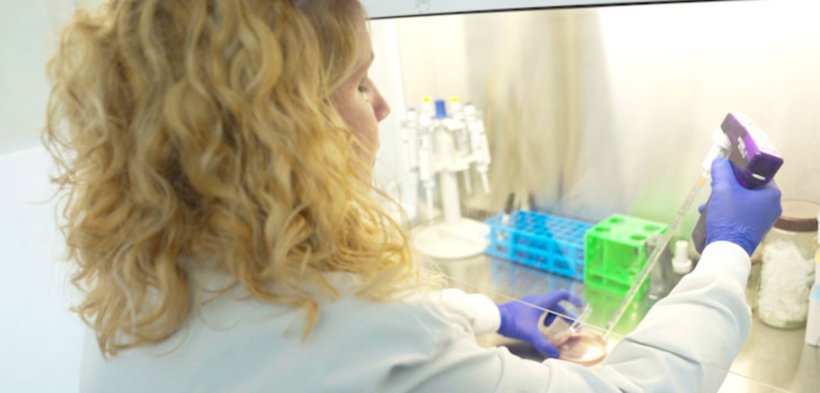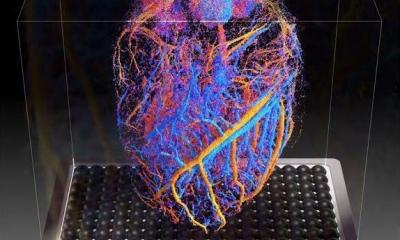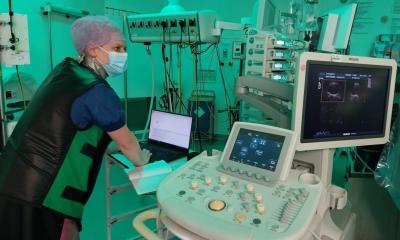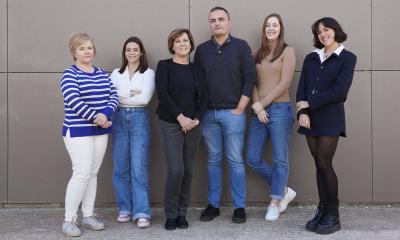
Image source: Queen's University Belfast
News • Damage in vascular organoids
Lab-grown diabetic vessels give new insights
A team of researchers from Queen’s University Belfast has successfully grown a mini version of human blood vessels from people with diabetes.
This breakthrough advances research of the disease by providing a new way for scientists to study how diabetes impacts blood vessels, potentially leading to the development of new treatments. The study has been published in the journal Stem Cells.
The research team, led by Professor Andriana Margariti from the Wellcome-Wolfson Institute for Experimental Medicine (WWIEM) at Queen’s University Belfast, also discovered how blood vessels in people with diabetes become damaged.
Our research [...] sheds new light on how diabetes damages blood vessels, leading to serious health issues like cardiovascular disease. This opens new possibilities for developing targeted therapies that can significantly improve the lives of people with diabetes
Andriana Margariti
Diabetes can damage blood vessels due to high blood sugar levels, leading to a buildup of fats, cholesterol and other substances in and on the artery walls, which significantly increases the risk of heart attacks and strokes. This damage impairs blood flow and nutrient delivery, contributing to severe cardiovascular diseases. The team identified a special small number of vascular cells present more in the blood vessels of people with diabetes that contribute to this damage, which can lead to severe complications such as heart disease and blindness.
By reducing diabetic complications such as cardiovascular disease and the risk of amputations, individuals with diabetes will experience significant health benefits and an improved quality of life in the near future. This research breakthrough is expected to enhance our understanding of diabetes and drive the development of potential new therapies soon. These advancements are hoped to have a profound impact on the quality of life for people with diabetes in Northern Ireland, the UK, and globally.
Professor Andriana Margariti, leading researcher from the WWIEM and the senior and corresponding author, explains: “Our research is of paramount importance as it sheds new light on how diabetes damages blood vessels, leading to serious health issues like cardiovascular disease. This opens new possibilities for developing targeted therapies that can significantly improve the lives of people with diabetes. This discovery is revolutionary, as it not only enhances our understanding of diabetes, but also has the potential to significantly reduce the need for animal testing in research as these human models can serve as effective replacements.”
Fearghal McKinney, Head of British Heart Foundation Northern Ireland, said: “More than 110,000 adults in Northern Ireland have been diagnosed with diabetes and, across the UK, one third of adults with diabetes will die from a heart or circulatory disease. This research, from Professor Andriana Margariti and her team, gives us a glimpse inside blood vessels to understand how damage occurs in diabetes. We look forward to seeing how this technique is used to unlock new treatments that can reduce the impact of heart and circulatory diseases for people living with diabetes and save more families from heartbreak.”
WWIEM Director Professor Charuhas Thakar said: “There are over 530 million people living with diabetes mellitus in the world today, and the prevalence is expected to continue to grow. A significant proportion of patients with diabetes will face the unfortunate prospect of vascular complications, despite tight glucose control. Once established, they are very debilitating, and there are very few existing therapies that can reverse the damage. This discovery will pave the way in advancing our understanding of how the vessels are damaged, and thus lead to novel diagnostic and therapeutic strategies.”
Co-author on the research, Professor David Grieve from the WWIEM, said: “This research represents a critical step towards understanding exactly how cardiovascular disease arises in people with diabetes as a major cause of ill health for which there are currently no specific treatments.”
Co-author on the research, Professor Alan Stitt from the WWIEM, said: “This study by Professor Margariti’s team is a revolutionary example of integrating clinical and fundamental science, where patient-derived cells can be studied in the laboratory setting. It has significantly advanced our understanding of the molecular basis for diabetes-related vascular complications and has the potential to reduce the need for animal testing in research by using human models as effective replacements.”
The research was funded by the Medical Research Council (MRC), the British Heart Foundation, and the Northern Ireland Department for the Economy.
Source: Queen's University Belfast
27.07.2024











